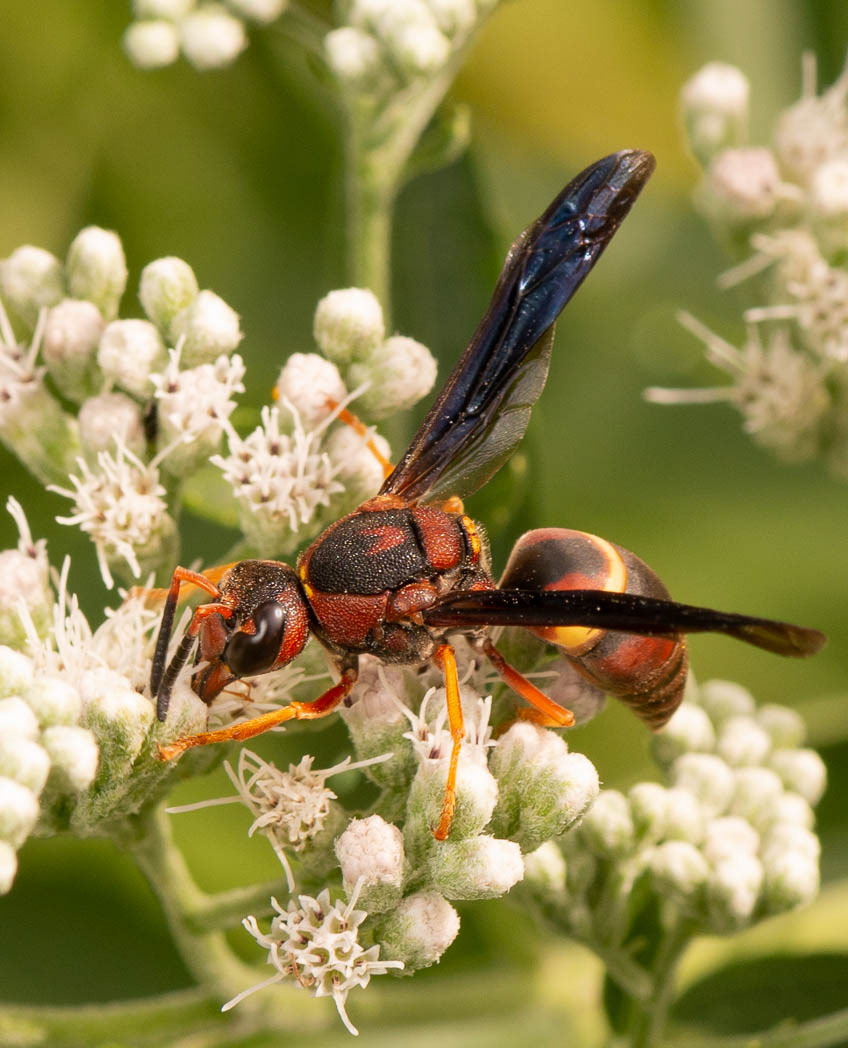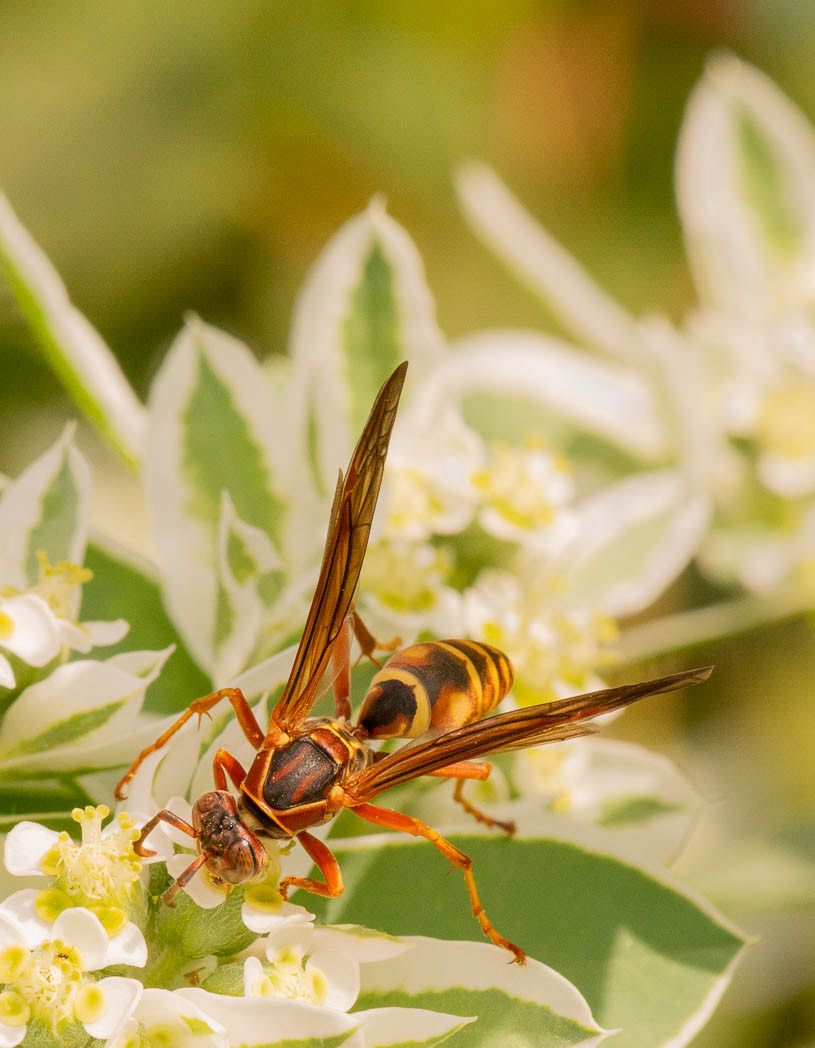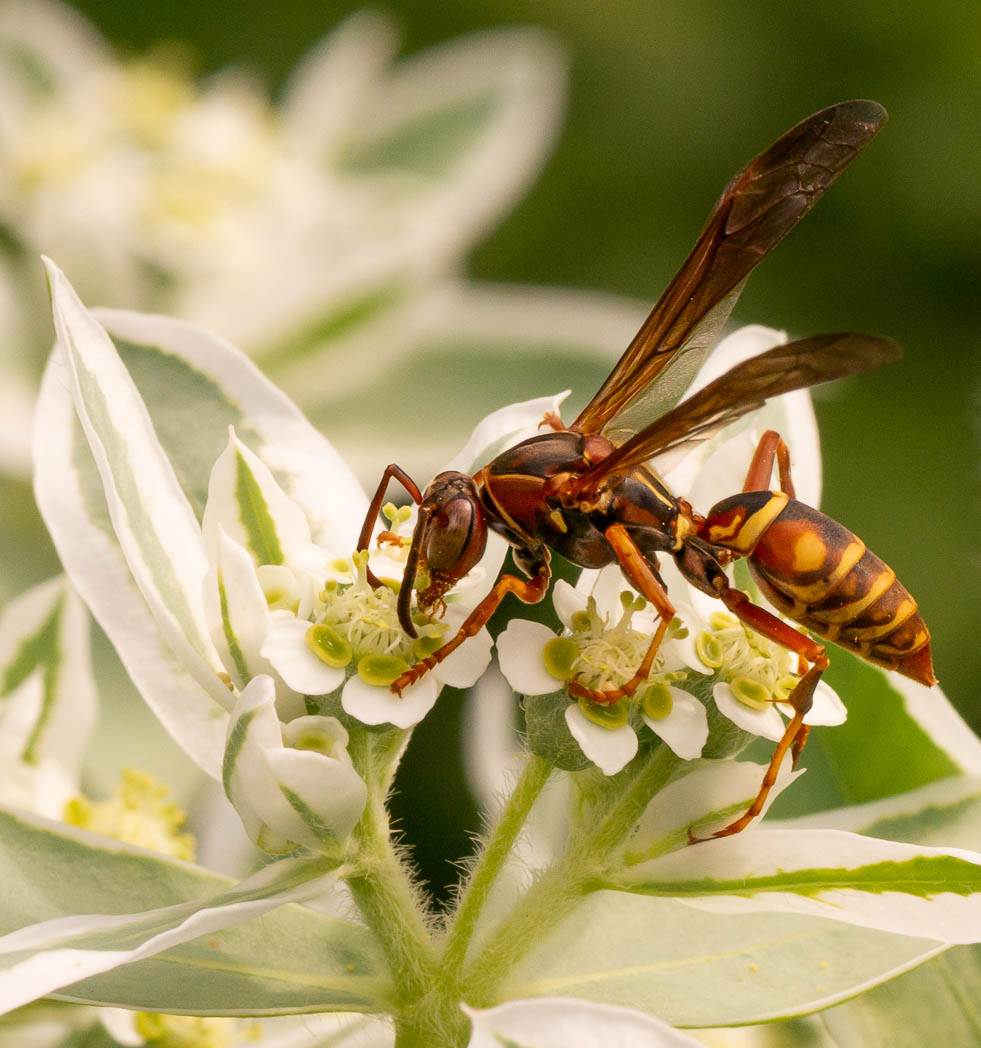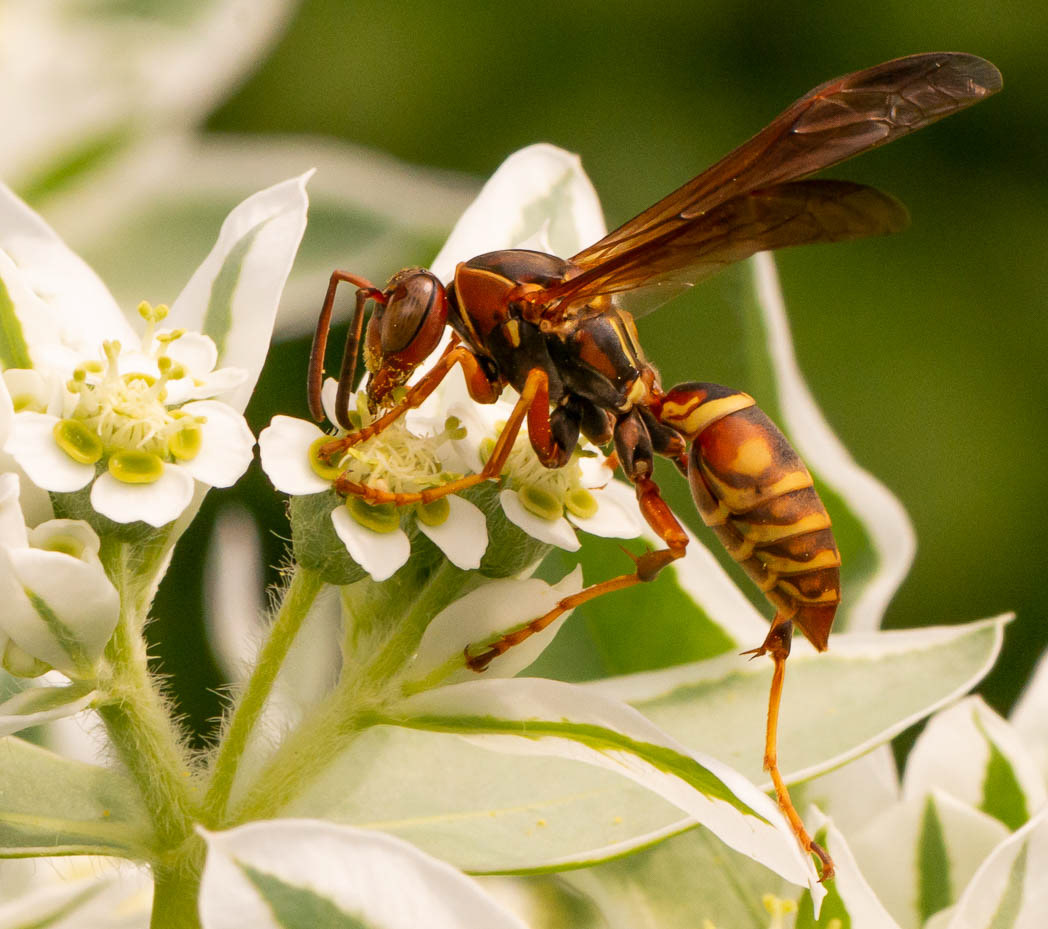


















There is a lot of color and pattern variation in the Northern Paper Wasp (Polistes fuscatus). One of the iterations is shown here with the first eight photographs, and another iteration is shown with the remaining images. This is a social wasp with one or more queens and a social structure of other colony members. One queen is dominant. The colonies are created either independently or by swarm. They make their nests from a paper like material made by chewing wood and combining it with a fluid in their mouths. They have a yearly life cycle in which the queen lays eggs in the cells first to create infertile female workers. Next, several queens are hatched. Then males are produced. Later, next year's queens are produced, mate, and hibernate for the winter to begin the cycle again in the spring. The current generation of queens, workers, and males all die before winter. Only the new queens live into the next year. There is conflict within the colony for dominance first among the founding wasps and then among the other females. The results dictate how high and where each may sit in the hive. Dominance/subservience behavior, or lack of it, tips off hive members to intruding wasps who are not hive members. They are quickly expelled. Through a variety of ways, they recognize individuals of the hive, which enables maintenance of the hierarchy and dictates work quotas and food and reproductive allocations. These wasps eat other insects, sap, fruit, and nectar. They are especially welcome in organic gardens because they do such a good job controlling the garden pests that pesticides are not needed. They aggressively defend the nest from threats. The queen leads the charge. Each wasp can sting many times. Besides protecting the nest, they generally only sting if provoked. I saw no sign of aggression when, moving slowly, I placed my camera lens very close while they were drinking nectar.


















